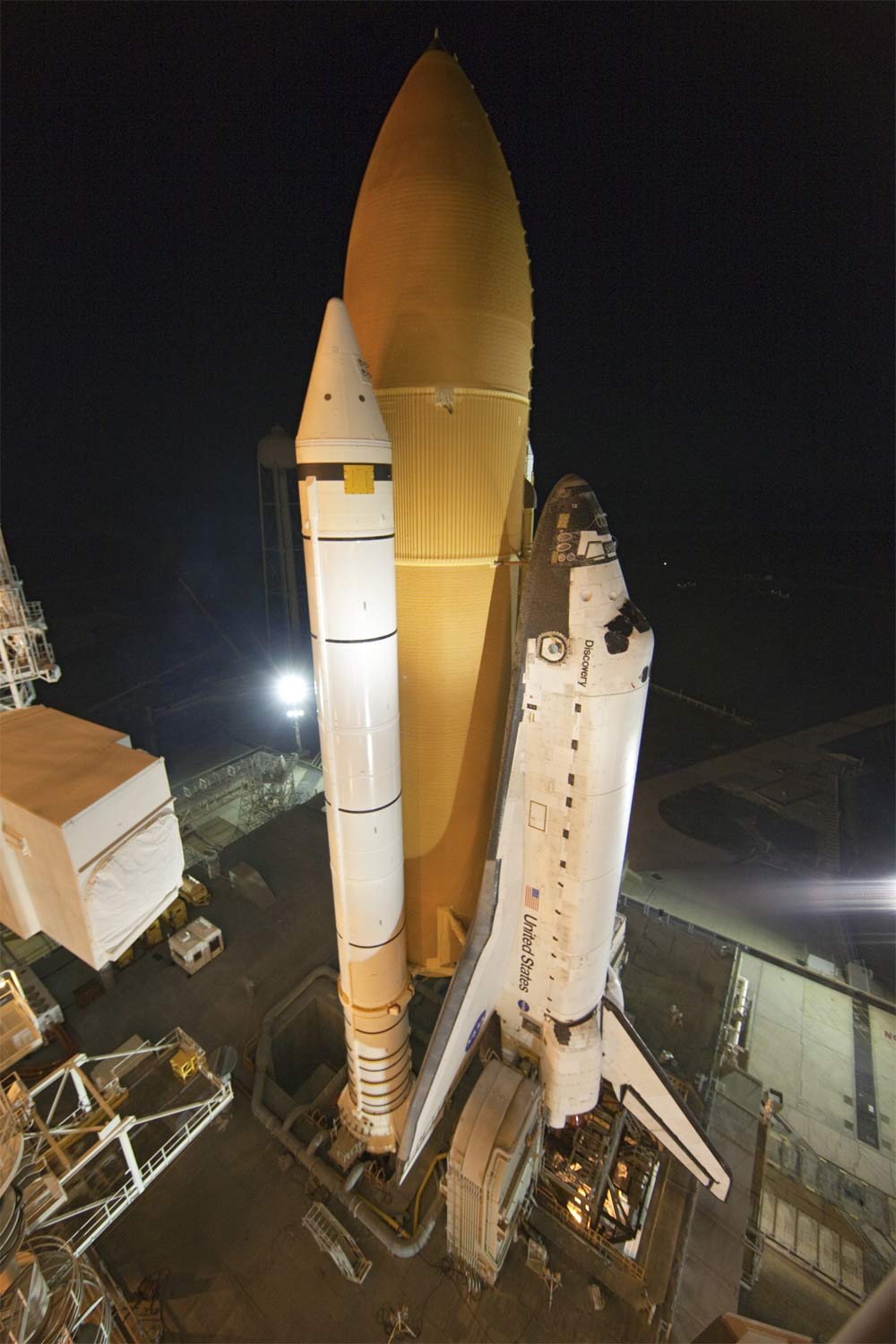NASA's Chances for Extra Space Shuttle Flight in Doubt

The most recent delay of the space shuttle Discovery's mission over issues with its fuel tank has raised some questions over whether NASA will be able to fly an extra shuttle mission later this year as planned.
NASA has two more shuttle trips planned before the aging three-orbiter fleet is retired. A third, final mission was approved last year by Congress in a NASA authorization bill signed by President Barack Obama.
Yet, funding for that bill has not been appropriated. Instead, the country is working under a continuing resolution – a stopgap measure put in place until lawmakers can agree on a formal budget – that freezes NASA and the rest of the government at 2010 funding levels.
Now some say the issues with the shuttle Discovery's fuel tank, which include numerous cracks discovered on some support beams, don't bode well for the extra mission, dubbed STS-135, said Florida's Senator Bill Nelson.
NASA engineers have been working to repair the cracks for the last several weeks.
"If worst came to worst and they felt like this tank was not safe, they would stand down and at that point would only fly two more shuttle flights instead of the three that are authorized," Nelson told Florida's WFTV.
Get the Space.com Newsletter
Breaking space news, the latest updates on rocket launches, skywatching events and more!
If NASA decides Discovery's tank is unusable, there are no spares. There are only the two remaining tanks reserved for the other two missions in the queue. If Discovery's tank cannot be fixed, Nelson suggested that NASA could cancel the STS-135 mission and use the tank allocated for it on the upcoming launch of Discovery.
However, since the tank set aside for the possible STS-135 shuttle mission was manufactured and assembled from the same batch of material as Discovery's tank, it would probably suffer the same problems and need similar fixes.
"I expect it to have exactly the same issues that this tank had," said NASA's shuttle program manager John Shannon during a Tuesday (Jan. 11) press conference. "Of course, we're going to continue to do testing. I'm going to say it's likely we'll do the exact same repair" on the tank for the extra mission.
Discovery's upcoming STS-133 flight has been delayed repeatedlyfrom an initial launch target of November 2010. It is now slated to launch Feb. 24on its mission to deliver spare supplies and a robot helper to the International Space Station. After that, NASA is aiming to launch the shuttle Endeavour on its final voyage in mid-April to carry an astrophysics experiment to the space station.
NASA is retiring the shuttle fleet after 30 years of servive to make way. The first space shuttle flight launched on. To date, 132 shuttle missions have flown.
If the extra STS-135 mission goes forward, it will be flown by the space shuttle Atlantis. That flight would also haul spare parts to help outfit the orbiting laboratory for life after NASA retires its space shuttle program.
Another issue threatening this flight is funding. While the mission was authorized, the money for it has not yet been granted to NASA, and the agency is stuck in limbo until a final budget is approved.
"We have the budget to get through the April flight and can get close to the June flight," said Bill Gerstenmaier, NASA's associate administrator for space operations. "We will need to see what happens with Congress and continuing resolution."
The current continuing resolution holds until March.
"We would need to get a new plan for the rest of the fiscal year," Gerstenmaier said. "It becomes tough for us to speculate what funding we have" beyond the scheduled April flight of Endeavour.
You can follow SPACE.com senior writer Clara Moskowitz on Twitter @ClaraMoskowitz.
Join our Space Forums to keep talking space on the latest missions, night sky and more! And if you have a news tip, correction or comment, let us know at: community@space.com.

Clara Moskowitz is a science and space writer who joined the Space.com team in 2008 and served as Assistant Managing Editor from 2011 to 2013. Clara has a bachelor's degree in astronomy and physics from Wesleyan University, and a graduate certificate in science writing from the University of California, Santa Cruz. She covers everything from astronomy to human spaceflight and once aced a NASTAR suborbital spaceflight training program for space missions. Clara is currently Associate Editor of Scientific American. To see her latest project is, follow Clara on Twitter.









